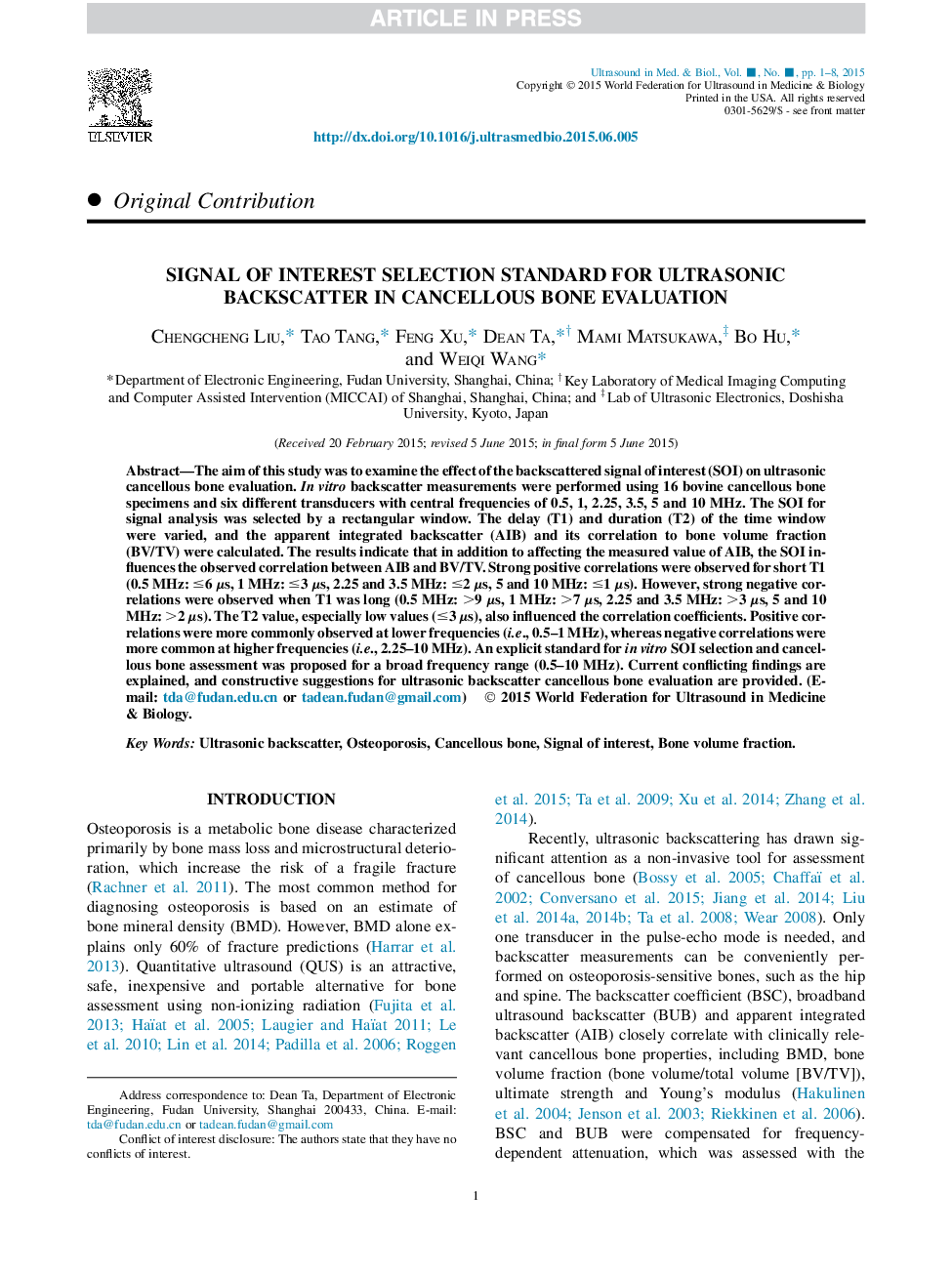| Article ID | Journal | Published Year | Pages | File Type |
|---|---|---|---|---|
| 1760460 | Ultrasound in Medicine & Biology | 2015 | 8 Pages |
Abstract
The aim of this study was to examine the effect of the backscattered signal of interest (SOI) on ultrasonic cancellous bone evaluation. In vitro backscatter measurements were performed using 16 bovine cancellous bone specimens and six different transducers with central frequencies of 0.5, 1, 2.25, 3.5, 5 and 10 MHz. The SOI for signal analysis was selected by a rectangular window. The delay (T1) and duration (T2) of the time window were varied, and the apparent integrated backscatter (AIB) and its correlation to bone volume fraction (BV/TV) were calculated. The results indicate that in addition to affecting the measured value of AIB, the SOI influences the observed correlation between AIB and BV/TV. Strong positive correlations were observed for short T1 (0.5 MHz: â¤6 μs, 1 MHz: â¤3 μs, 2.25 and 3.5 MHz: â¤2 μs, 5 and 10 MHz: â¤1 μs). However, strong negative correlations were observed when T1 was long (0.5 MHz: >9 μs, 1 MHz: >7 μs, 2.25 and 3.5 MHz: >3 μs, 5 and 10 MHz: >2 μs). The T2 value, especially low values (â¤3 μs), also influenced the correlation coefficients. Positive correlations were more commonly observed at lower frequencies (i.e., 0.5-1 MHz), whereas negative correlations were more common at higher frequencies (i.e., 2.25-10 MHz). An explicit standard for in vitro SOI selection and cancellous bone assessment was proposed for a broad frequency range (0.5-10 MHz). Current conflicting findings are explained, and constructive suggestions for ultrasonic backscatter cancellous bone evaluation are provided.
Related Topics
Physical Sciences and Engineering
Physics and Astronomy
Acoustics and Ultrasonics
Authors
Chengcheng Liu, Tao Tang, Feng Xu, Dean Ta, Mami Matsukawa, Bo Hu, Weiqi Wang,
